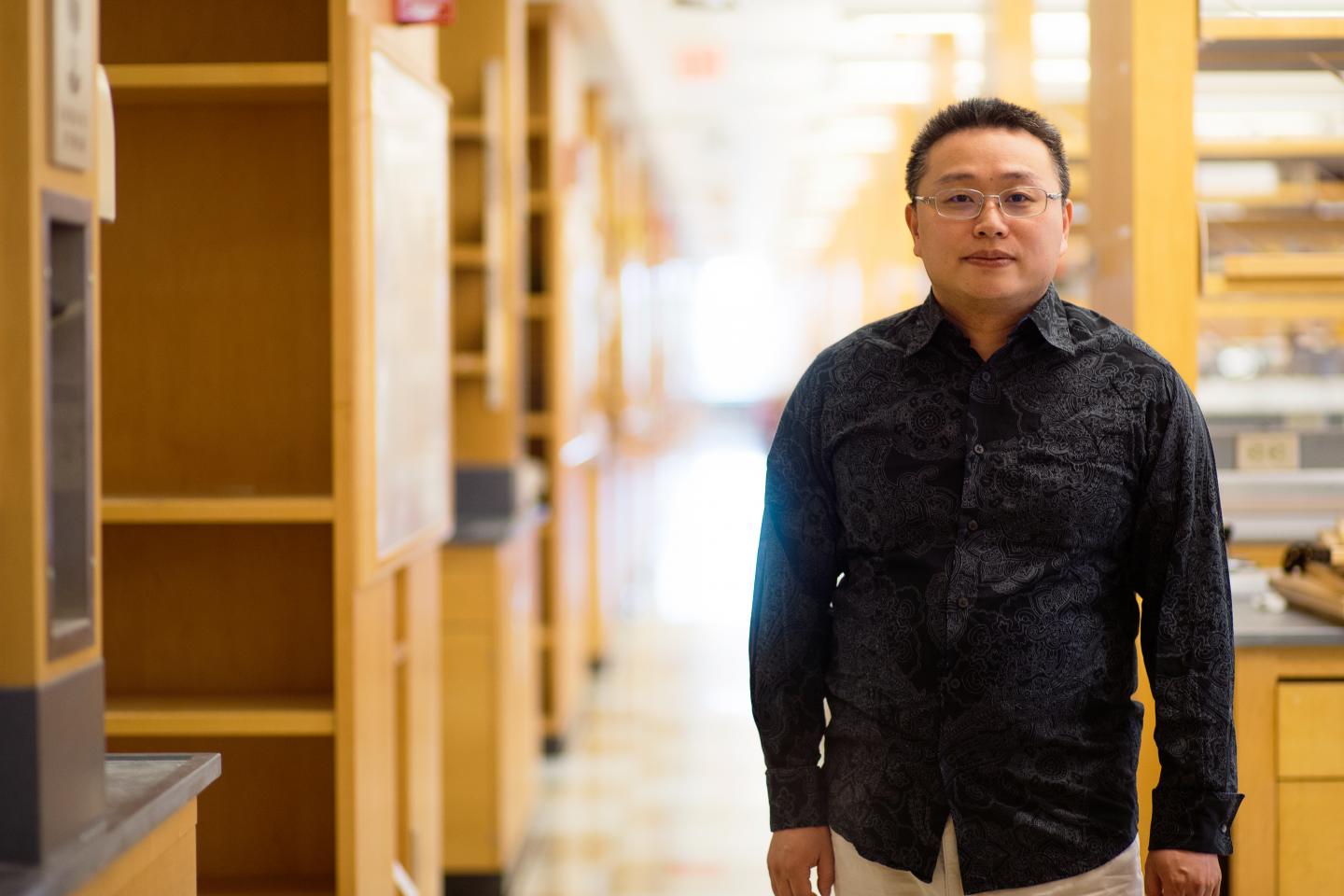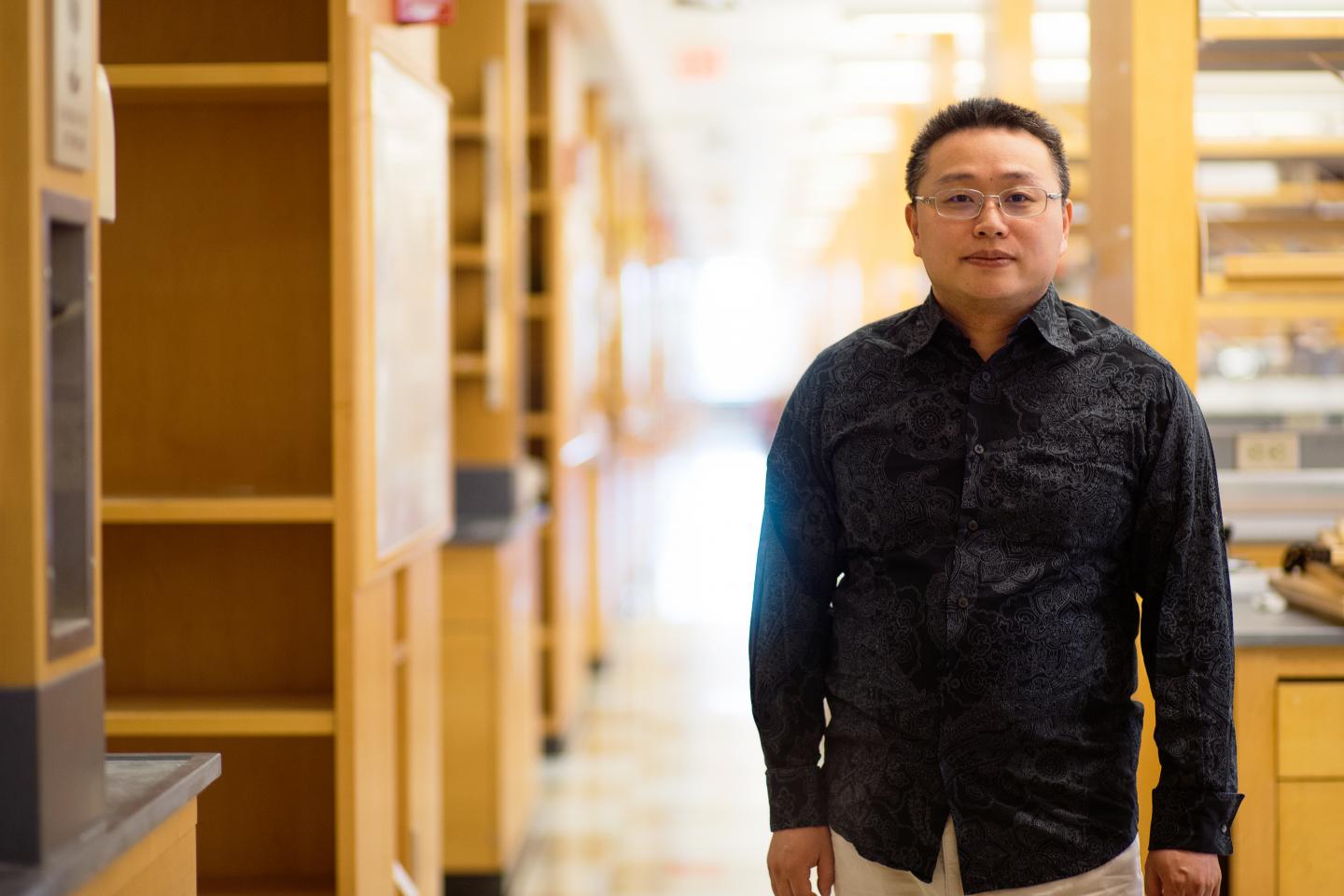
Credit: UMass Medical School
WORCESTER: UMass Medical School scientist Gang Han, PhD, and his team have designed a new class of molecules used in photodynamic therapy that are able to direct lamp light deep into tissue to kill cancer tumors.
In a new paper published in the Journal of the American Chemical Society, Dr. Han, associate professor of biochemistry & molecular pharmacology, outlines how the carbazole-substituted BODIPY (Car-BDP) molecules, which possess an intense, broad NIR absorption band with a remarkably high singlet oxygen quantum yield, will further the potential clinical application for photodynamic therapy.
"This study signals a major step forward in photodynamic therapy by developing a new class of NIR-absorbing biodegradable organic nanoparticles for a highly effective targeting and treatment of deep-tissue tumors," Han said.
Tissue penetration depth is a major challenge in practical photodynamic therapy. Traditionally, it involves the patient receiving a nontoxic light-sensitive drug, which is absorbed by all the body's cells, including cancerous ones. A red laser light specifically tuned to the drug molecules is then selectively turned on in the tumor area. When the red light interacts with the photosensitive drug, it produces a highly reactive form of oxygen (singlet oxygen) that kills the malignant cancer cells while leaving most neighboring cells unharmed.
Based on research by the Han Lab at UMMS and colleagues, the process might become simpler, more effective and cost efficient.
Han explained that after being encapsulated with biodegradable polymers, Car-BDP molecules can form uniform and small, organic nanoparticles that are water-soluble and tumor targetable. Used in conjunction with a record low-power-density and cost-effective incoherent lamp light, rather than the coherent high power laser light that is used in the existing therapy, the molecules can be tracked as they spread through the body, deep into the tissue and to outline and kill cancerous tumors. More interestingly, the organic nanoparticles were found to have an extremely long circulating time and can be removed from body, which is essential for new practical photodynamic therapy drug development, Han said.
Han said the combination is "sufficient to monitor and trigger practical photodynamic therapy effect of these nanoparticles within a wide variety of deep-tissue level tumors such as lung, colon, prostate and breast cancers."
In addition, the potential new platform for precise tumor-targeting theranostics and novel opportunities with low power lamp light could allow for future affordable clinical cancer treatment that patients may be able to manage in their homes or resource deficient areas, such as on battlefields and in developing countries.
###
About UMass Medical School:
The University of Massachusetts Medical School (UMMS), one of five campuses of the University system, comprises the School of Medicine, the Graduate School of Biomedical Sciences, the Graduate School of Nursing, a thriving research enterprise and an innovative public service initiative, Commonwealth Medicine. Its mission is to advance the health of the people of the commonwealth through pioneering education, research, public service and health care delivery with its clinical partner, UMass Memorial Health Care. In doing so, it has built a reputation as a world-class research institution and as a leader in primary care education. The Medical School attracts more than $240 million annually in research funding, placing it among the top 50 medical schools in the nation. In 2006, UMMS's Craig C. Mello, PhD, Howard Hughes Medical Institute Investigator and the Blais University Chair in Molecular Medicine, was awarded the Nobel Prize in Physiology or Medicine, along with colleague Andrew Z. Fire, PhD, of Stanford University, for their discoveries related to RNA interference (RNAi). The 2013 opening of the Albert Sherman Center ushered in a new era of biomedical research and education on campus. Designed to maximize collaboration across fields, the Sherman Center is home to scientists pursuing novel research in emerging scientific fields with the goal of translating new discoveries into innovative therapies for human diseases.
Media Contact
Megan Bard
[email protected]
508-856-2296
@UMassMedical
http://www.umassmed.edu
############
Story Source: Materials provided by Scienmag




